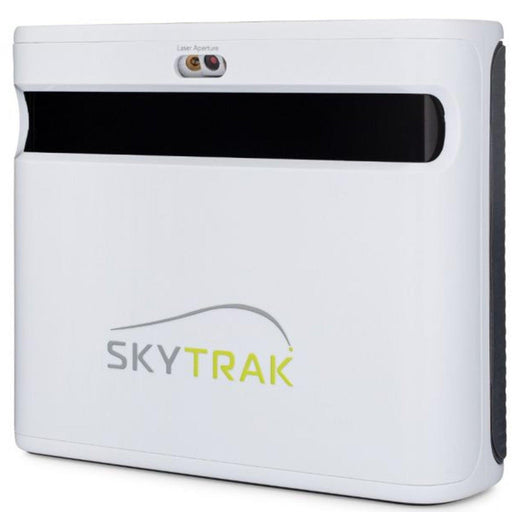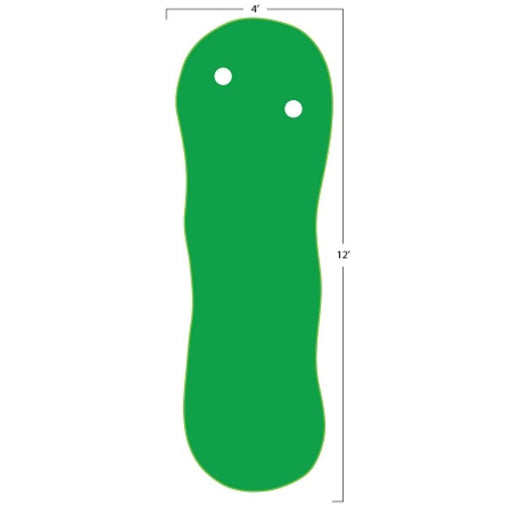
Weighing the Pros and Cons of Indoor and Outdoor Putting Greens
When it comes to perfecting your golf game, having a dedicated putting green is a game-changer. Whether you're a seasoned pro or a casual player, the decision between an indoor and outdoor putting green can significantly impact your practice routine. In this blog post, we'll explore the pros and cons of both options to help you make an informed decision that suits your needs.
Indoor Putting Greens:
Pros:
- Weather Independence:
- One of the most significant advantages of indoor putting greens is their immunity to weather conditions. Rain or shine, you can practice your putting skills without interruptions, providing a consistent practice environment year-round.
- Year-Round Accessibility:
- Indoor putting greens are not affected by seasonal changes. Regardless of the weather outside, you can maintain a regular practice routine without worrying about extreme temperatures, snow, or other outdoor factors.
- Customization and Convenience:
- Indoor putting greens can be customized to fit the available space in your home. Whether it's a dedicated room, basement, or even a corner of your living space, indoor greens offer convenience and the ability to design a setup that suits your preferences.
Cons:
- Space Limitations:
- Indoor putting greens are often limited by the available indoor space. If you have a large home or are willing to dedicate a significant area to your golf practice, this might not be a major issue. However, those with limited space may find outdoor options more appealing.
- Artificial Turf Costs:
- Achieving a realistic indoor putting surface often involves investing in quality artificial turf. While the initial cost may be higher, it's essential to consider it as a long-term investment in your game.
Outdoor Putting Greens:
Pros:
- Natural Feel and Aesthetics:
- Outdoor putting greens often provide a more natural feel as they can be installed with real grass. The aesthetic appeal of a well-maintained outdoor green can enhance your overall golfing experience.
- Space Options:
- The great outdoors offers almost limitless space for creating your perfect putting green. If you have a spacious backyard, garden, or even a rooftop, you can design a larger and more varied practice area compared to many indoor setups.
- Cost Efficiency:
- Depending on the size and design, outdoor putting greens can be more cost-effective than their indoor counterparts. Natural grass can be less expensive than high-quality artificial turf, and the outdoor environment eliminates the need for additional lighting and climate control.
Cons:
- Weather Dependence:
- The most significant drawback of outdoor putting greens is their vulnerability to weather conditions. Rain, extreme temperatures, and other outdoor elements can disrupt your practice routine, making it challenging to maintain consistency in your game.
- Seasonal Limitations:
- In colder climates, outdoor putting greens may only be usable during the warmer seasons. Winter weather, snow, and freezing temperatures can limit your ability to practice outdoors.
Choosing the Perfect Putting Green:
Ultimately, the choice between an indoor and outdoor putting green depends on your personal preferences, available space, and climate. Indoor greens offer year-round accessibility and weather independence but may be limited by space and upfront costs. Outdoor greens provide a natural feel and cost efficiency but are subject to weather conditions and seasonal limitations.
Consider your priorities and weigh the pros and cons carefully to create the perfect putting green that aligns with your golfing goals and lifestyle.
Featured products
-
SkyTrak+
Original price $2,995.00 - Original price $3,145.00Original price$2,995.00 - $3,145.00$2,995.00 - $3,145.00Current price $2,995.00Introducing the SkyTrak+ Launch Monitor: Unmatched Accuracy and Advanced Features Experience a new level of precision and innovation with the SkyTr...
View full details -
ProTee Majestic Simulator Package
Original price $9,618.00 - Original price $13,848.00Original price$9,618.00 - $13,848.00$9,618.00 - $13,848.00Current price $9,618.00ProTee Majestic Golf Simulator Package: Elevate Your Indoor Golf Experience Transform your home or business into a golfer’s dream with the ProTee M...
View full details -
Eagle Golf Mat
Original price $370.00 - Original price $1,130.00Original price $370.00$370.00$370.00 - $1,130.00Current price $370.00Introducing the Eagle Golf Mat: The Ultimate Golf Experience Are you passionate about golf and demand nothing but the very best in your practice eq...
View full details -
Retractable HomeCourse® Golf ProScreen 180
Original price $2,299.00Original price $2,299.00 - Original price $2,299.00Original price $2,299.00Current price $1,999.00$1,999.00 - $1,999.00Current price $1,999.00HomeCourse® Golf ProScreen 180 HomeCourse® Golf ProScreen 180 is a retractable golf screen and enclosure. HomeCourse® Golf ProScreen 180's ballisti...
View full details -
The Augusta V2 4'x12' 2 Cups
Original price $399.00Original price $399.00 - Original price $399.00Original price $399.00Current price $329.00$329.00 - $329.00Current price $329.00The Augusta is one of Big Moss’ traditional models. It offers unmatched versatility for teaching and year round practice. Make a long-term investme...
View full details





